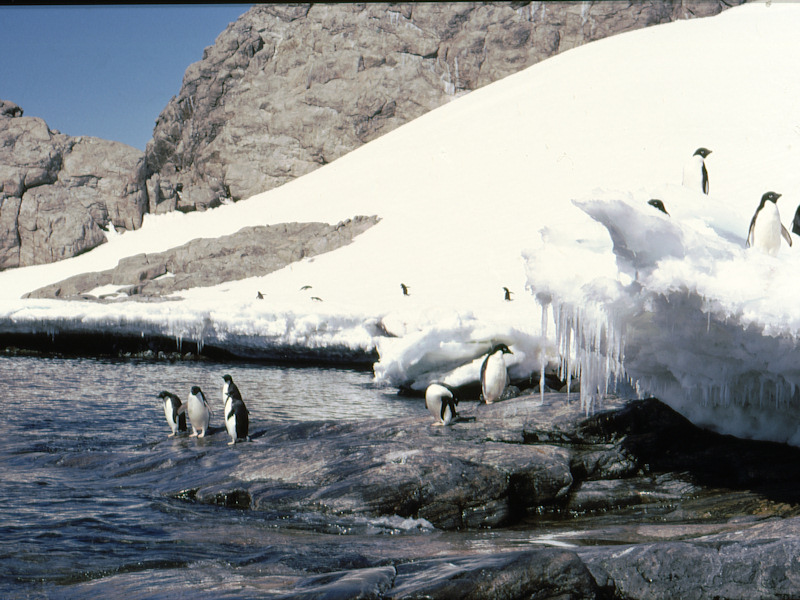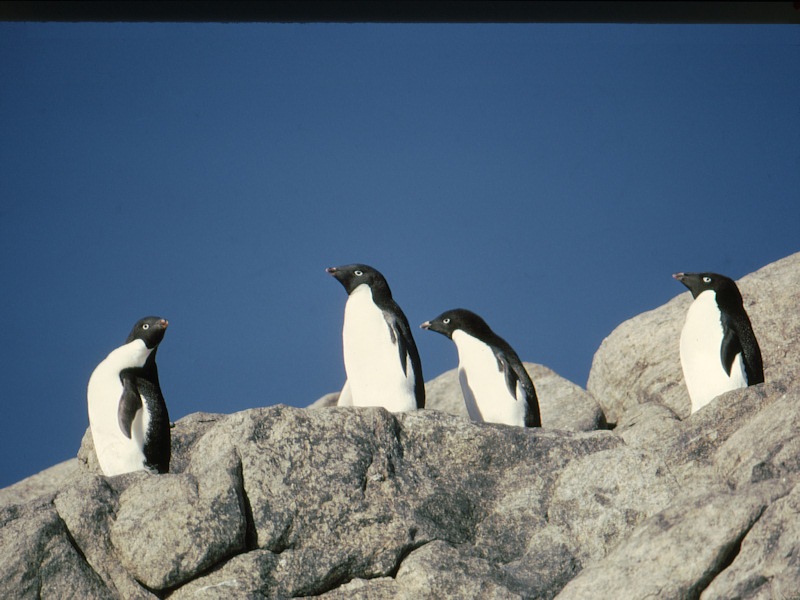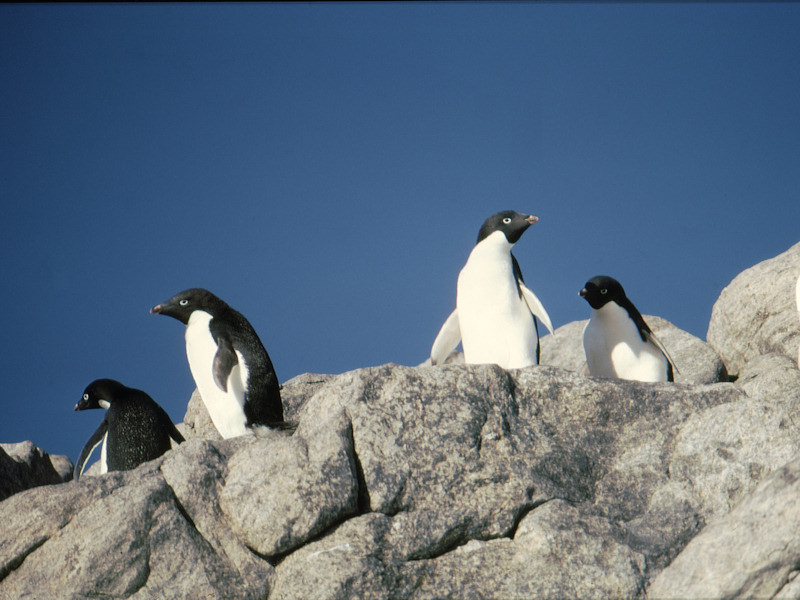
Photo album: "Adélie penguins' life"
Fly over a photo with the mouse to enlarge it
Click on a photo to open it in a new window
On the contrary to emperor penguins, Adélie penguins come to Pointe Géologie archipelago to reproduce during summer. They can do this because their reproduction cycle is much shorter. Adélie penguin couples have their nests on the islands and come back every year on the same nest. The female lay two eggs they can, then, they can incubate them in turn. When the chicks hatch they go on fetching food for them in turn. They never let them alone because skuas are ready to take them. When they go into the sea another predator is looking for them : leopard seal (leopard seals are strong predators that can reach 4 m long and a weight of 500 kg). There can always be one swimming near the islands. Adélie penguins are very fast underwater swimmer. They can also swim like dolphins jumping out of the water, which allows them to look for a possible danger, without slowing down. They, also jump out of the water to land on a piece of ice or on an island, up to around two metres above sea level.
 |
Adélie penguin grows 45 to 60 cm high and weighs 4 to 6 kg. Like all other penguins it is a bird that does not fly but it is a very fast swimmer. |
 |
Adélie penguins on the "beach". |
 |
After the bath. |
 |
Couple of Adélie penguins with their two chicks. |
 |
Now they are both looking at me, as to say: " Go away ! No photos allowed!" |
 |
Adélie penguin on its nest. We can see easily the rays of droppings that leave from the nest in every directions. |
 |
Adélie penguins are good climbers, in the snow as well as onto the rock. They assist themselves with their bill when the slope is too steep.. |
 |
These penguins found out they cannot go any farther in that direction. |
 |
They go back, therefore, to the path they came from. |
 |
Adélie chicks are not as pretty as emperors', but maybe their dark colour has the function of retaining better the sunrays' heat. |
 |
We are at the end of January and Adélie chicks are now big enough to fear skuas no longer. They remain alone while together their parents come and go to fetch them food. |
.
.
.
.
.
.
.